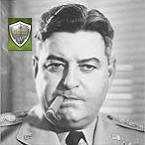ORIGINAL: Meyer1
Colin, I don't agree with many things Curtiss has said, but I think in the infantry-artillery supply issue, I think he is right.
One thing that you are forgetting is that the infantry also base much of his combat potential in their heavy weapons: an infantry division has artillery, so an infantry battalion, and the companies. Only when you get down to the basic level of infantry formations, you will find only small caliber weapons. And since the supply runs through higher echelons than the section, as long as the unit is not isolated, it would recieve all kinds of ammunition that needs, unless there's a problem with the availability of some items (but that doesn't concern us here)
This point has more validity the higher up the unit hierarchy you go. While the point is excellent for a division, an infantry battalion or regiment really doesn't have all that much in the way of high-munition requirement weapons.
The point is that even if you can't get in enough munitions to make full use of the 81 mm mortars, etc., all those riflemen can achieve considerable combat value with a minimum of supply. This contrasts with an artillery battalion, which becomes useless very fast if it is not getting several tons of shells every hour.
Anyway, as I said, the thing to do would be to make the calculation by weapon rather than by unit icon. As a unit fell into negative supply, the rifle squads would retain say 50% of their combat value. The tanks and artillery pieces would cease to have any value at all. So a well-equipped infantry division -- which derives a lot of its firepower from heavy weapons -- would retain only a fraction of its combat strength. At a lower scale, the artillery would shut down, but the infantry battalions would continue to have considerable value.
You are (corret me if I'm wrong) advocating for a higher drop of the combat effectiveness, in the event of low supply situations, for the artillery compared to the artillery. I don't think that should be the case, because 1) the infantry also has artillery and 2) as Curtis said, the supply would be delivered according to the unit's needs
As noted, this objection can be dealt with if the program looks at the actual weapons rather than the unit icon. Curtis, of course, refuses to note that I am talking about a situation where the units' needs
can't be fulfilled. If the rifle battalion needs one ton, and the artillery battalion needs fifty tons, what happens if only one ton of munitions can be brought in? You'll obviously do better if you supply the rifle battalion.
Now, the case when the unit is isolated: is only natural that the ammunition that is faster consumed, is the most effective and longer ranged one, and that would be heavy weapons ammunition. And that is true for the artillery and also for the infantry units.
So, in this case, the infantry will expend first the heavy weapons rounds, and (if it was not yet destroyed) the small arms ammo. Of course, when out of ammo, (if attacked) it would be destroyed.
So I think a case could be made that, once out of ammo in their most charasteristic weaponry, the artillery units would be more effective than the infantry ones, because the artyllery men could fight as infantry, as they also have rifles/carabines. Should be then TOAW model the arillery units, when isolated and out of supply for their heavy weapons, as low quality infantry? IMO this would be a unnecessary complication.
Well, actually, a lot of designers put light rifles into their artillery battalions for just this reason: artillery does have some value as infantry, and when the need arises, will fight as such. For example, in
Seelowe I've found it best to put in about one light rifle for every two artillery tubes in the artillery regiments. These don't add to the bombardment strength -- but do keep attackers that have broken through the line from rampaging through the entire enemy artillery park.
So in the situation I am envisioning, these artillery units would retain some combat value -- but by virtue of the infantry squads they contain. As the situation stands, though, the game would let the Germans just keep banging away with the actual artillery. It doesn't matter that the firepower they still have represents about a ton of shells per hour, and what would be coming ashore would allow for about a tenth of that ammunition expenditure -- the artillery can just keep blazing away. So I have to have a house rule: German orange- or red-light artillery can't provide assigned fire support. Since the British are in a situation more like what Curtis imagines is universal -- quartermasters with access to more or less infinite stocks filling each order as it comes in -- there's no overwhelming need to saddle them with a similar rule.
However, this is neither a satisfactory nor a complete solution. It represents me doing what I can about a flaw in the game. I'd rather see the flaw corrected.





